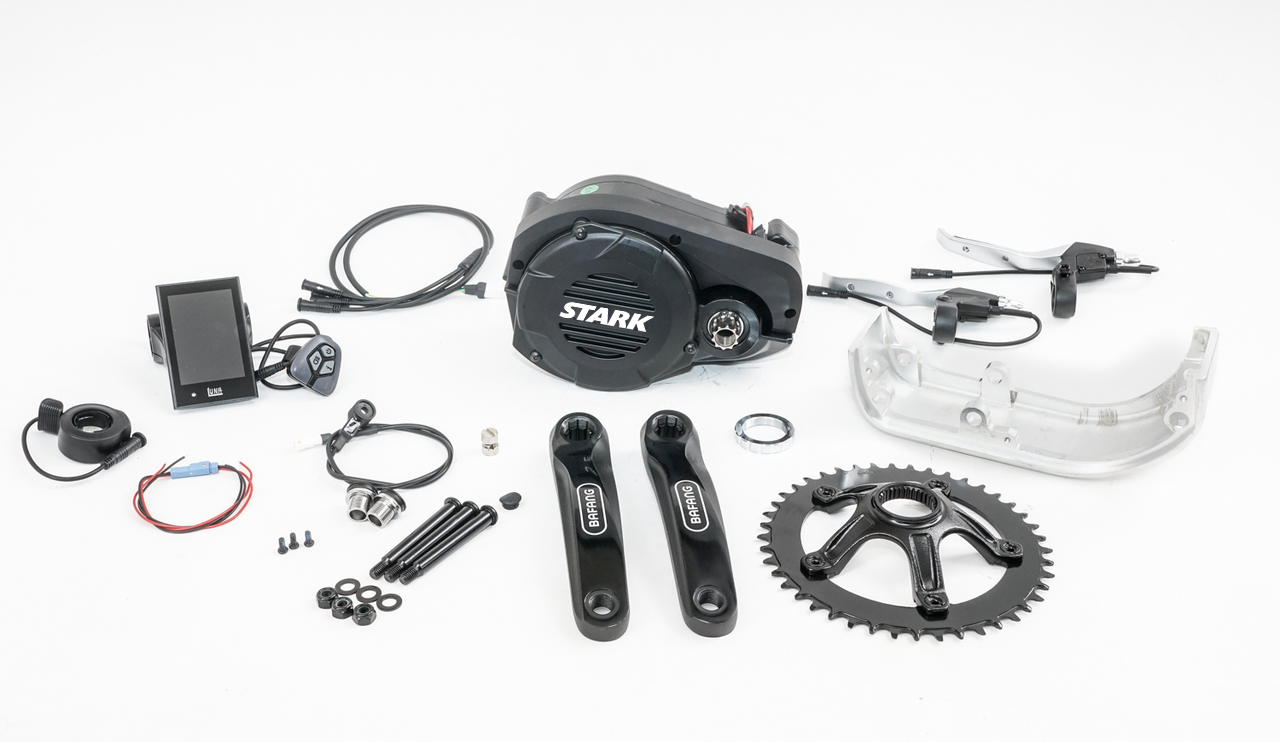Stark Drive Torque - Voltage Matters

In combination with the motor power level which is measured in Watts, another important consideration if you want to get the most speed possible out of your electric bike is to consider the bike or system wide voltage. The industry has settled for the most part on a system-wide voltage of 36V which is typical of most ebikes on the market but you can also find less expensive electric bikes operating at 24V and on the other side of the spectrum are ones operating at 72V and beyond.
Typically higher voltage results in higher RPM and theoretically a higher efficiency on your motor if its designed for such. Peak efficiency is improved at higher voltage without any appreciable decrease in battery life however the biggest impact on your battery life is drag and at higher speeds you will have the higher drag which will have the largest impact on your battery life. Increased performance and and efficiency, which equates to acceleration and greater range, will result from increasing the voltage on your bike and gearing down. This will also result in less energy loss associated with the heat in the copper and lower temperatures result in lower resistance (as we all know coppers resistance increases with temperature, the reason behind huge heat syncs for example on high powered computers processors).
For our upcoming Stark Drive Torque (SDT) Max which will operate at 48V we have chosen a 13S configuration for our battery packs. This compared to the 10S configuration that is used for a 36V pack and this has some important consequences for those that purchase batteries. A battery pack that is switched from 36V to 48V will require more cells to achieve the same AH rating that is typically used to describe the total 'capacity' of the battery pack. Typically the restricting factor on a battery pack is the space inside the battery housing and as you increase the amount of cells, you also increase the amount of internal resistance in the pack.
One of the things we have noticed in the industry has been an overly optimistic description of the range of any given pack but the reality of the situation is that you can expect about 32km of range from a 3.5kg lithium battery pack. Companies that claim 80km on a charge either have a 10kg battery pack attached to their bike or intend that you pedal for 65 km then turn on the battery for the last 15km. The Cells inside the battery pack are a constant and you can do the test yourself by weighing your battery pack as the battery housing weight is near insignificant.
What will make SDT Max super fast is the 48Vs that the battery pack delivers and in our testing we easily achieved 45-50kph with the restrictions disabled and pedaling in the optimal gear. That being said, SDT is no slough either easily getting 35-40kph mainly due to the lighter total bike weight.
As all our batteries are installed internally in the frame, hidden from view, there is no need to worry about mounting the battery. SDT Max will get you much better performance on challenging terrain and hauling heavier loads while SDT is the perfect bike for those that are just commuting from point a to b in the city. Both of these upcoming bikes will come with exceptionally well (some might say over) designed mid motor drives from Bafang and there is a lot of information on the web testing and reviewing these motors on the web in real world conditions. SDT Max in fact has been rated to function up to 2500W.
Just a short bit of information about how and why we designed STD the way we have. We hope that its going to be the perfect ebifor you and how you choose to experience the thrill of a mid motor torque based drive system instead of the more antiquated and less performance focused hub motors that are so prevalent on the market today.
Sincerely
Stark Drive Team
Stark Drive LLC

